GraphQL without GraphQL
Juho Vepsäläinen

1/34

2/34
What to Expect
- What is GraphQL?
- My Experience with GraphQL
- Schema First Design with GraphQL
- GraphQL without GraphQL
- Lessons Learned
3/34
What is GraphQL?
4/34
GraphQL
5/34
GraphQL Schema Definition Language (SDL)
- A definition language is used to define an API
- Separate language to describe types and their relations
- In addition, code implementing Queries and Mutations is needed
6/34
My Experience with GraphQL
7/34
Why I Began to Use GraphQL
- Initially my content was tied to my website
- Mobile app needed to consume the same data
- A content API was needed and GraphQL fit the bill
8/34
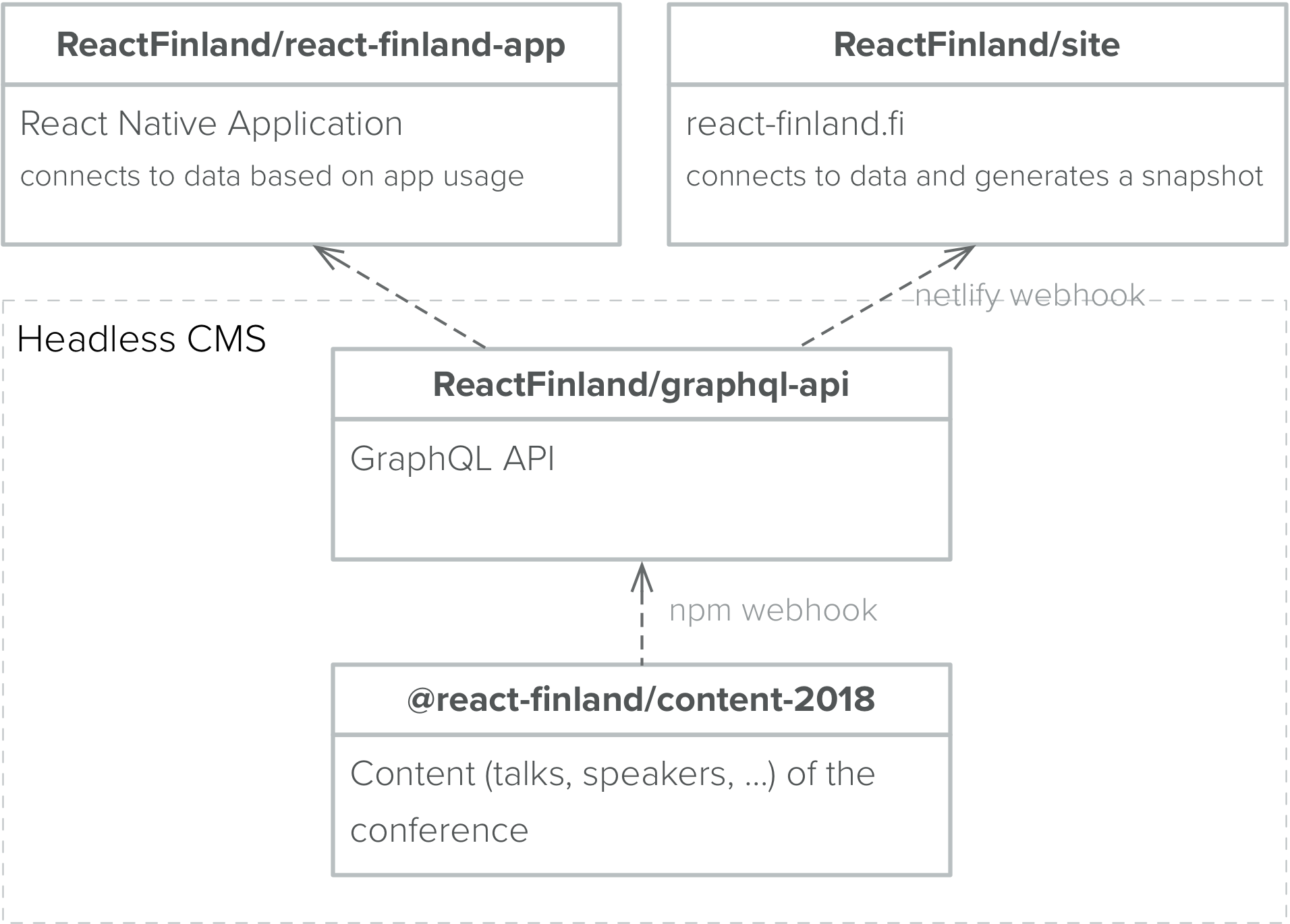
9/34
React Finland API
10/34
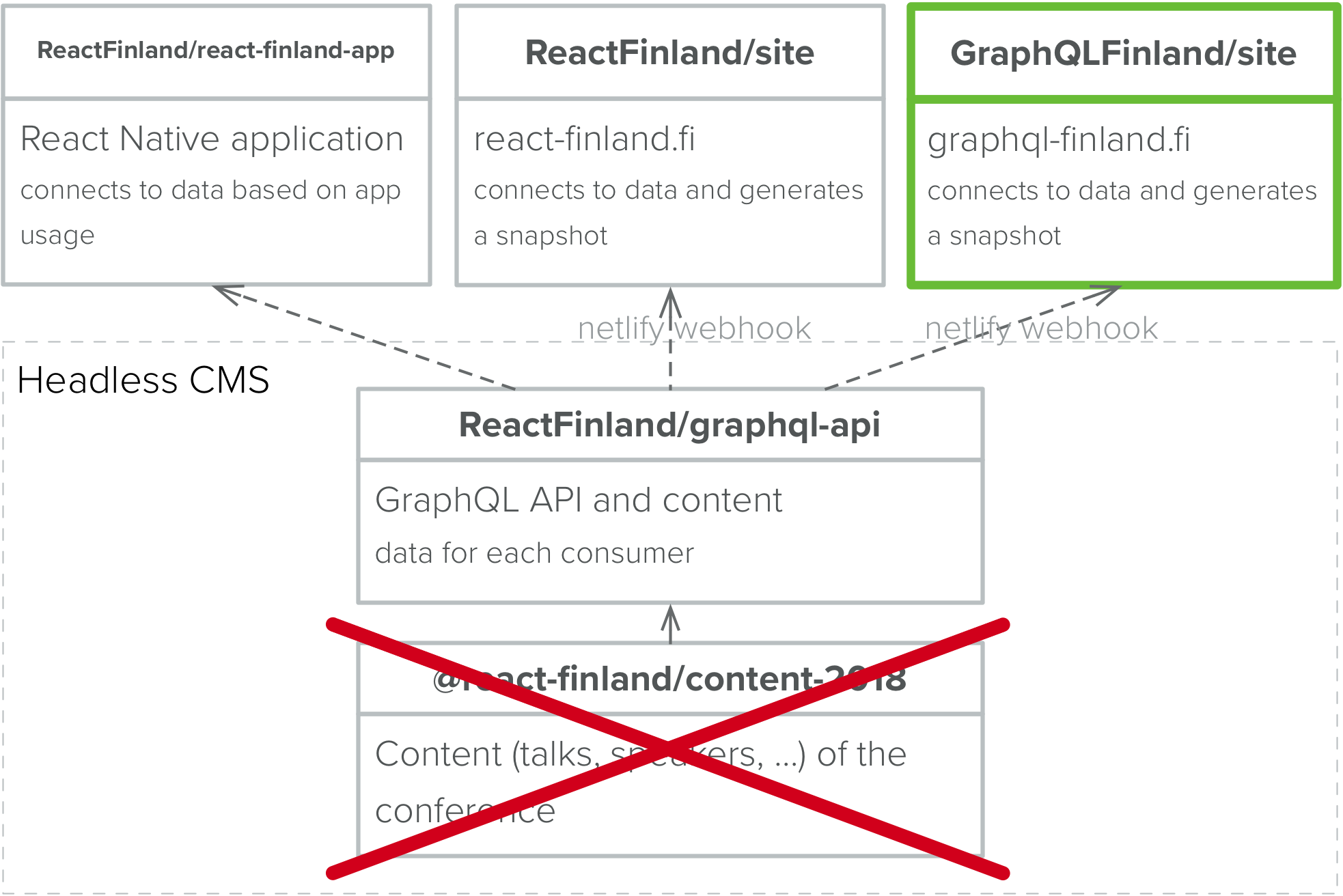
11/34
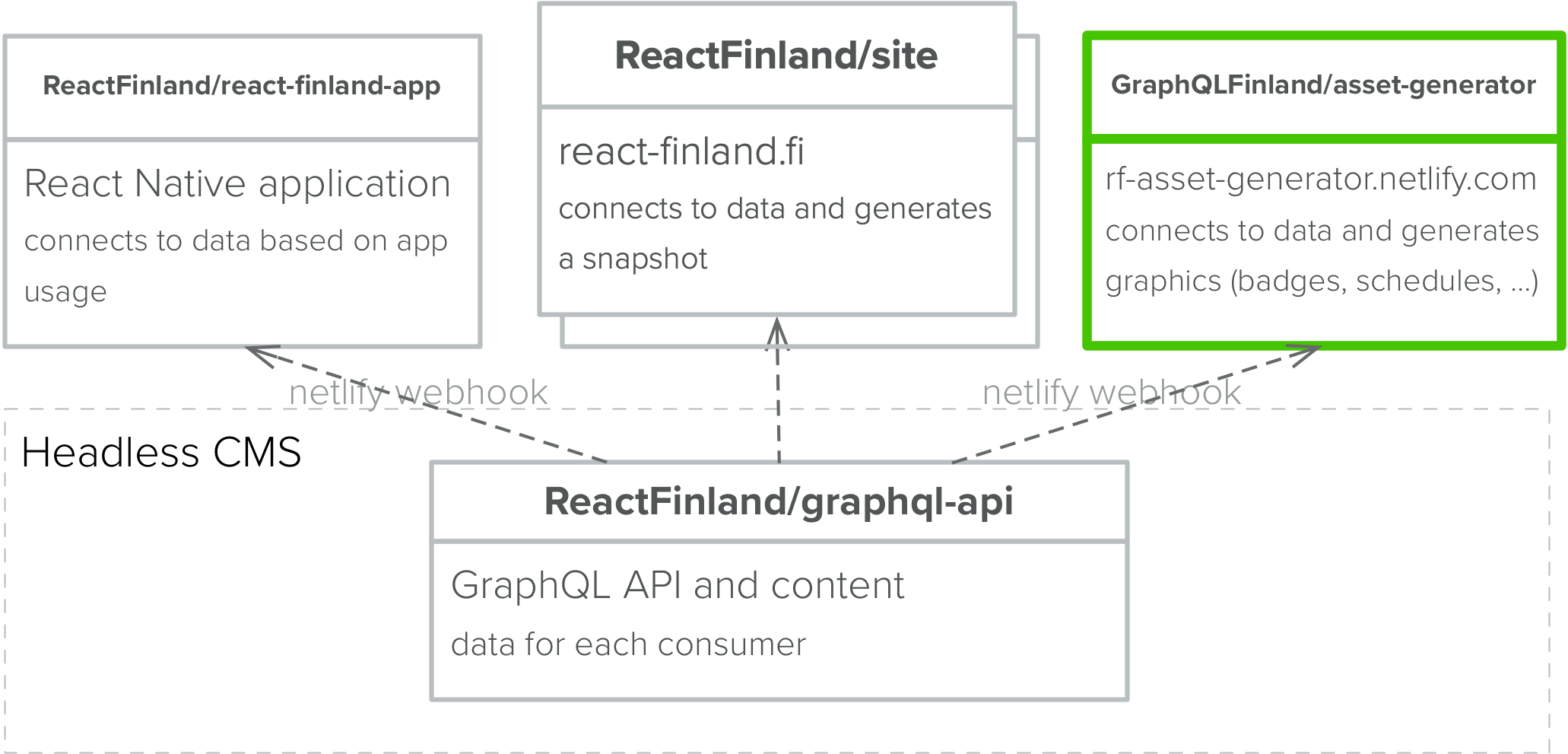
12/34
Asset Generator
13/34
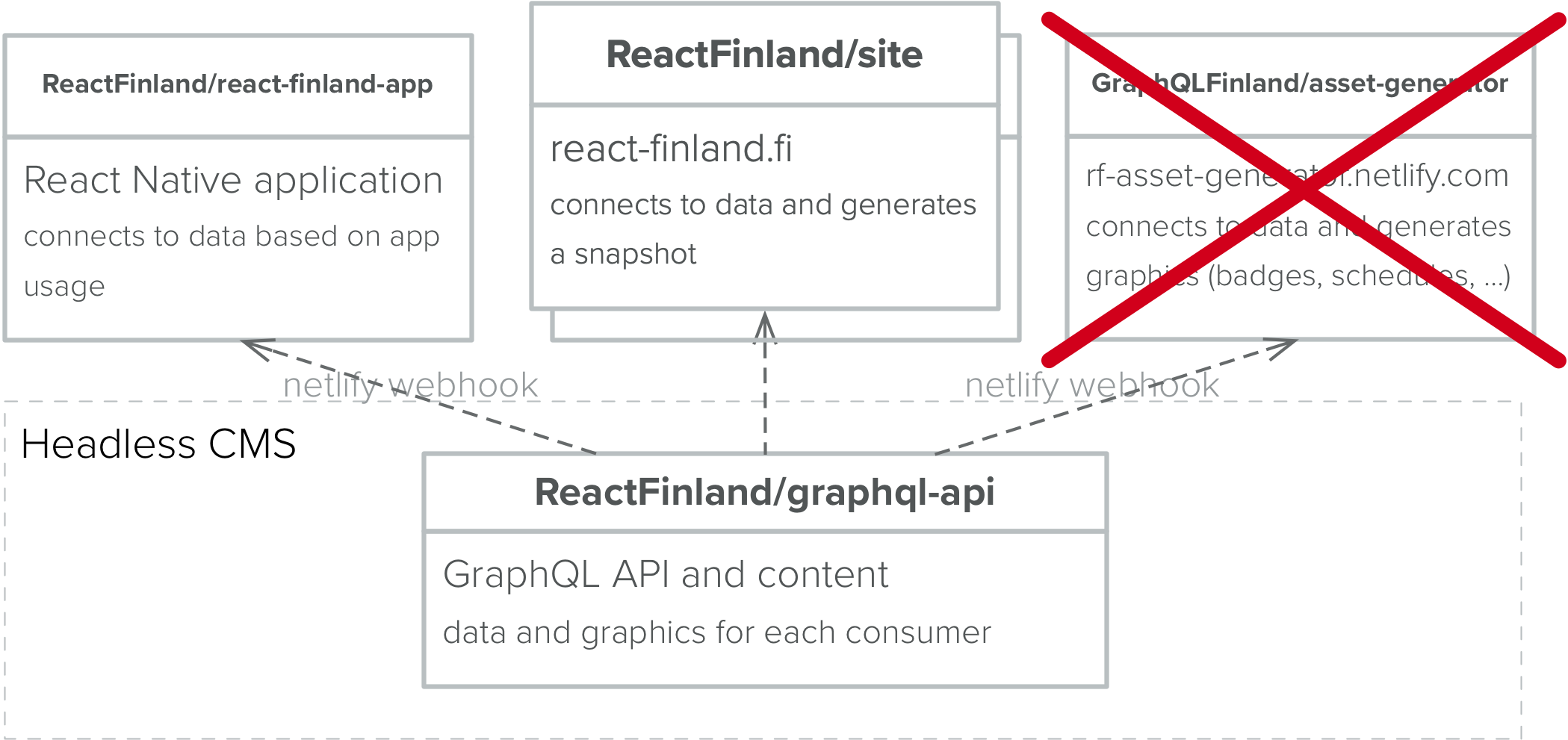
14/34
Asset Designer
15/34
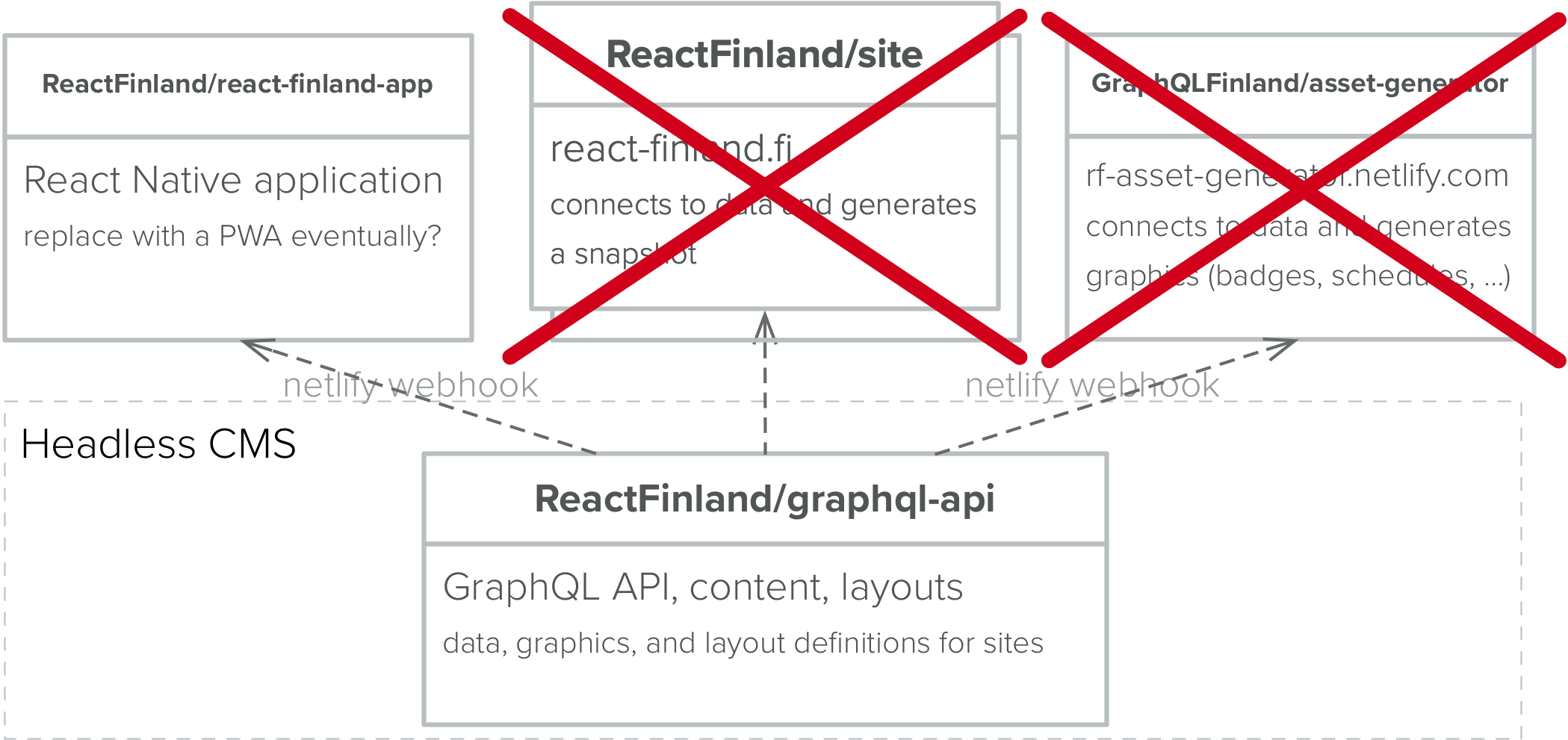
16/34
Schema First Design with GraphQL
17/34
Schema First Design (SFD)
Define the Schema first and the rest will follow
18/34
SFD with GraphQL
- Think of the main concepts of your system (i.e.,
Conference,Contact,Location,Theme) - Think of the fields and types the concepts have (i.e.,
name,description) - Think of the nature of the fields (i.e. where does the data come from)
19/34
TypeGraphQL
20/34
Types as Classes
Conference.ts
...
@ObjectType()
export class Conference {
@Field(_ => ID)
public id!: string;
@Field(_ => String)
public name!: string;
@Field(_ => Contact)
public organizer!: Contact;
...
}Generated schema:
type Conference {
id: ID!
name: String!
organizer: Contact!
...
}GraphQL/TypeScript definition at the same time!
21/34
Resolvers as Classes
ConferenceResolver.ts
...
@Resolver(_ => Conference)
class ConferenceResolver {
@Query(_ => Conference)
public conference(
@Arg("id", _ => ID) id: string
) {
return getConference(id);
}
...
}Generated schema:
type Query {
conference(id: ID!): Conference
}Resolve to data here (async possible too)
22/34
What else?
- Dependency injection (inject db service for example)
- Authorization (add more annotations)
- Validations (GraphQL scalars and specific annotations)
- Query complexity handling
- And more
23/34
Why I use TypeGraphQL
- I don't have to think of GraphQL Schema
- I can consume types from my frontend
- I can generate GraphQL queries (WIP)
24/34
GraphQL without GraphQL
25/34
Is it possible to use GraphQL and TypeScript type systems to generate queries?
Spoiler: Yes
26/34
React Demo
Schedule.tsx
interface ScheduleProps {
theme: Theme;
intervals: Array<{
begin: Interval["begin"];
end: Interval["end"];
sessions: Array<{
title: Session["title"];
type: Session["type"];
}>;
}>;
}Schedule.tsx
function Schedule({
theme, intervals
}: ScheduleProps) {
...
}The types point to our schema (source of truth for GraphQL)
27/34
Approach
- Extract types from GraphQL schema and React components
- Implement
connected(Schedule)finds the component by name and constructs the related queries
To work, the system expects to find matching root queries (i.e.
themeandintervalsin this case)
28/34
Constraints
- Expects components to be strictly typed
- Expects backend to implement queries matching to collections
- Expects you to use TypeScript for now
29/34
Pros and Cons
Pros:
- Eliminates the need to maintain separate GraphQL queries
- Typechecking through TypeScript
- No need for graphql-tag or similar solution?
Cons:
- Additional abstraction to worry about (query generator)
- Loses some power of GraphQL (directives through comments?)
30/34
Lessons Learned
31/34
Schema First Design ties frontend and backend together
32/34
Types lead to new possibilities (i.e. automating queries, testing)
33/34
- Check out https://github.com/survivejs/slides for the slides
- Thank you @typeofconf!
34/34